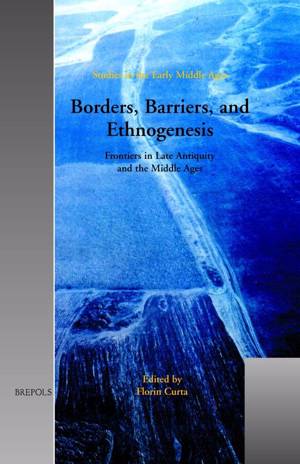
- Afhalen na 1 uur in een winkel met voorraad
- Gratis thuislevering in België vanaf € 30
- Ruim aanbod met 7 miljoen producten
- Afhalen na 1 uur in een winkel met voorraad
- Gratis thuislevering in België vanaf € 30
- Ruim aanbod met 7 miljoen producten
Zoeken
€ 79,50
+ 159 punten
Omschrijving
This collection addresses an audience of early medievalists with an interest in material culture and its use in building ethnic boundaries. The traditional concept of frontier is one of current debate by historians and archaeologists alike, but sometimes without reference to each other. For instance, the social and cultural construction of (political) frontiers remains outside the current focus of post-processualist archaeology, despite the significance of borders for the representation of power, one of the most popular topics with archaeologists interested in symbols and ideology. Similarly, historians of the early Middle Ages have only recently developed an interest in the political manipulation of cultural difference across state frontiers. Perhaps the most interesting aspect of this new direction of research is the emphasis on political frontiers as crucial for the creation, rather than separation, of ethnic configurations. Recent work on the relation between monastic communities and political frontiers has shown the potential for a study of frontier symbolism. The idea of the present volume grew out of the realization that there was a great deal of new work being done in this direction which deserved a wider audience. This was true both of studies of late antique frontiers and of more recent research on medieval frontier societies. In addition, several authors address the issue of religious identities and their relations with ethnicity and state ideology. In that respect, the book is directed to a large audience, particularly because of its wide geographical range, from Iberia and the Balkans to Cilicia and Iran.
Specificaties
Betrokkenen
- Auteur(s):
- Uitgeverij:
Inhoud
- Aantal bladzijden:
- 271
- Taal:
- Engels
- Reeks:
- Reeksnummer:
- nr. 12
Eigenschappen
- Productcode (EAN):
- 9782503515298
- Verschijningsdatum:
- 31/01/2006
- Uitvoering:
- Hardcover
- Formaat:
- Genaaid
- Afmetingen:
- 167 mm x 248 mm
- Gewicht:
- 635 g

Alleen bij Standaard Boekhandel
+ 159 punten op je klantenkaart van Standaard Boekhandel
Beoordelingen
We publiceren alleen reviews die voldoen aan de voorwaarden voor reviews. Bekijk onze voorwaarden voor reviews.








